8 things I learned that greatly improved my foley recordings
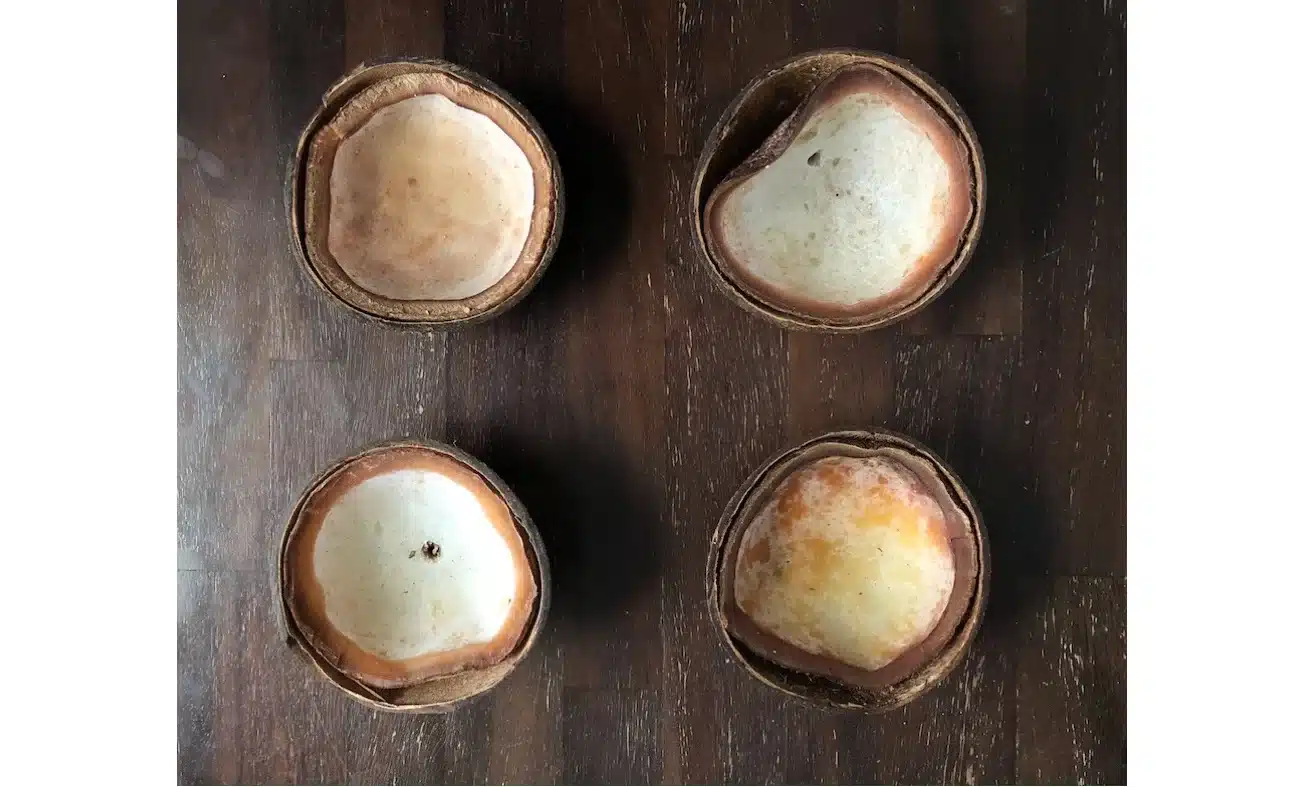
My foley journey
When I did my first ever foley recording I was a sound student and had no clue what I was doing. I used a mediocre microphone, equalized the hell out of my foley recordings thinking I was improving them. And I never had seen any foley artist work (both in real life or in a making of video). After graduating being an aspiring foley artist in a small country with a small film industry meant I was on my own. There was no experienced foley artist in the Netherlands at that time. So figuring out what was good sounding foley and what was not came from just doing it and analyzing if I liked the sound of it. Working with sound colleagues helped shaping my foley sound taste and getting feedback from sound designers was very valuable too.
The first years as a foley artist I still had no visual reference of how a foley artist worked and how a foley studio looked like. That changed when I decided to start my own foley studio and visit the foley studio of Irish foley artist Caoimhe Doyle (Game of Thrones, The Favourite, Room). Watching her work was a life changing experience and both affirmed that I was doing a lot of things correct, but also opened my eyes to things that could be improved in technique, performance, microphone use, how to divide the space in a foley studio and how to use the acoustics of the studio in the foley recordings. This leads me to number 1 on the list of 8 things I learned that greatly improved my foley recordings:
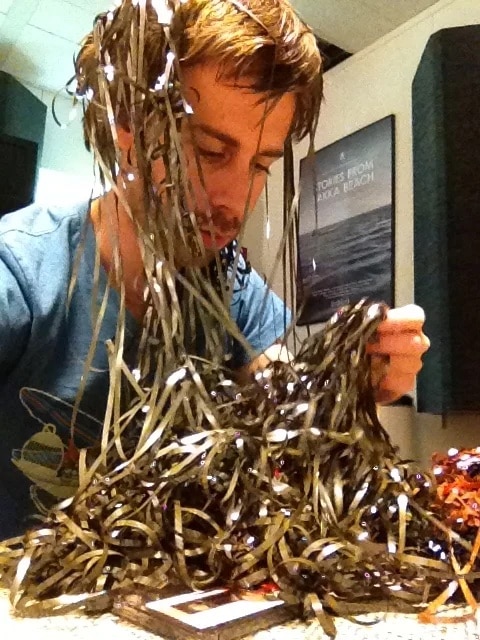
a young me creating more grass surfaces from cassette tape
1-Use perspective and acoustics in your foley recordings
Nowadays I use the acoustics of the studio greatly in my foley recordings.
When I just started out I would record my foley in a dry studio with no acoustics. But nowadays in my own studio I change the acoustics of the studio all the time to make the room more dead or reverberant, dependent on the space the scene takes place in. Multiple room mics give the foley mixer the possibility to make even more variety in the room sound that we mix together with the dry signal to create perspective. This saves the re-recording mixer lots of tweaking cause what we deliver already sounds lively and natural, although of course still reverb needs to be added. We strive for 60/70% reverb in our foley recordings so the rest can be added later by the re-recording mixer.
I also use the acoustics of the studio in more subtle ways. For certain props I know in which part of the studio I need to stand to make the prop sound better. Skin touches for instance sound better when performed in a more reverberant part of the studio so they don’t sound to ‘clicky’ but more lively and diffuse, which tame the transients.
2- Performance and emotion are more important than sync
Don’t get me wrong: having good sync as a foley artist is important. But footsteps that are slightly out of sync can be easily edited. You cannot edit emotion or performance in a foley recording though. They don’t call foley artists actors of sound for nothing. If the character in a scene is angry you need to hear that in the footsteps. This doesn’t always have to be that you need to be stamping your feet, but walking with more energy and a bit more staccato might help for instance.
When watching a scene I study the characters body language closely and try to feel what he feels and move a bit how he moves. Being musical helps too. Being a drummer I use my experiences with rhythm and dynamics greatly in my performance. A more dynamic footsteps take in which not every footstep has the same sound or intensity helps to have a more natural and musical sounding foley performance. And unconsciously I incorporate a lot of rhythmic patterns in my foley recordings which make it sound musical and because of that logical to listen to aswel. Be sure to communicate this with your foley editor though, so the natural sounding rhythms don’t change into static robotic patterns when the editor tries to improve the sync of the footsteps.
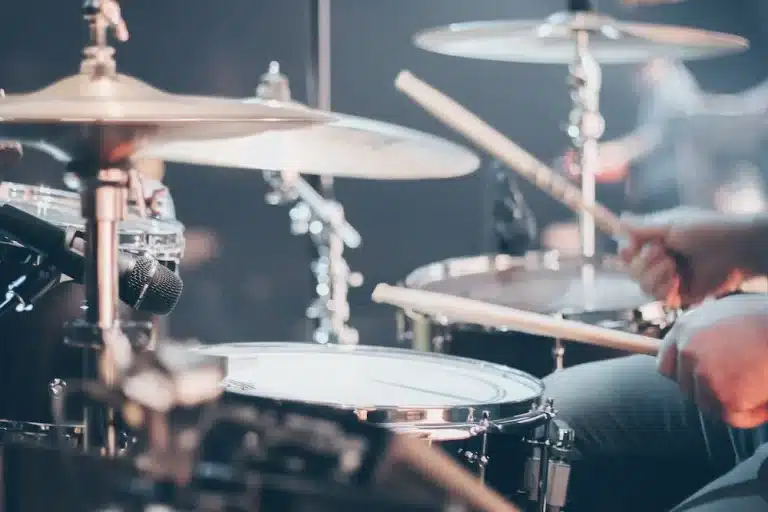
3) Never stop experimenting in the foley studio
Experimenting is one of my favorite parts about my job as a foley artist. When I have 2 weeks of free time in between projects I always have plenty of ideas for testing out new props, new plugins or improving the studio acoustics. Spending time alone in your foley studio can get you in a mindset where you suddenly get the best ideas of how to organise your foley props in a better way or how to improve a certain floor or foley prop. Very often these impulsive sound ideas turn out to be gold when working on the next project. Suddenly that new prop turns out to be your new favorite one and that new microphone you rented captures the low end in the foley recordings just a little bit better.
In that same category I make sure I have time to experiment too when preparing the foley recordings for a bigger movie with more challenging props or surfaces. When preparing for the movie The Occupant this year I spend quit some time to go through all my options for snow sounds. A big part of the movie is in the snow and the preparation payed out greatly when recording the foley. We could give every type of snow the right sound. And for the foley recordings of footsteps in a crashed helicopter I went through all my metal surfaces to make sure I had the best rattly and shaky metal sound with still enough body to sell the sound of footsteps in a crashed helicopter.

The Occupant (2023)
4) Watching foley colleagues at work is very valuable
Watching a more experienced foley artist at work can be very valuable as I described in the beginning of this article. I was already being a foley artist for years when I first experienced this, but learned tons. You could learn a lot from watching an experience foley artists microphone use, mic placement, posture, performance, prop handling, communication with the foley mixer, how they go through a scene or movie, in which order they go through the props, what sounds they record in a scene and which ones they skip and in general how the foley sounds. So ask a senior foley artist if you can watch him /her work in their foley studio and search on YouTube for foley artists at work. For more info about how I get my foley inspiration on YouTube check this article
5) Use contact mics during foley recordings
In the years I tested quit a lot of contact mics and found them very useful in many situations. You can stick a contact mic on a metal surface for instance and capture more of the metal resonance of the object or floor and mix this with the dry signal. And we use contact microphones during foley recordings of footsteps on a concrete floor or in the dirt to give more weight to the footsteps. This can be very useful when someone walks up a concrete stairs and you wanna hear more body and resonance of the stairs. Or when a horse walks on the dirt and the coconuts or hooves you are using are not giving enough weight.
Hydrophones are also very useful both as a contact mic in the dirt for instance or in the water for underwater recordings. For underwater scenes we record both the hydrophone and a Sennheiser MKH 50 above water and record them on separate tracks so the re-recording mixer can make a nice mix out of them and has enough flexibility.
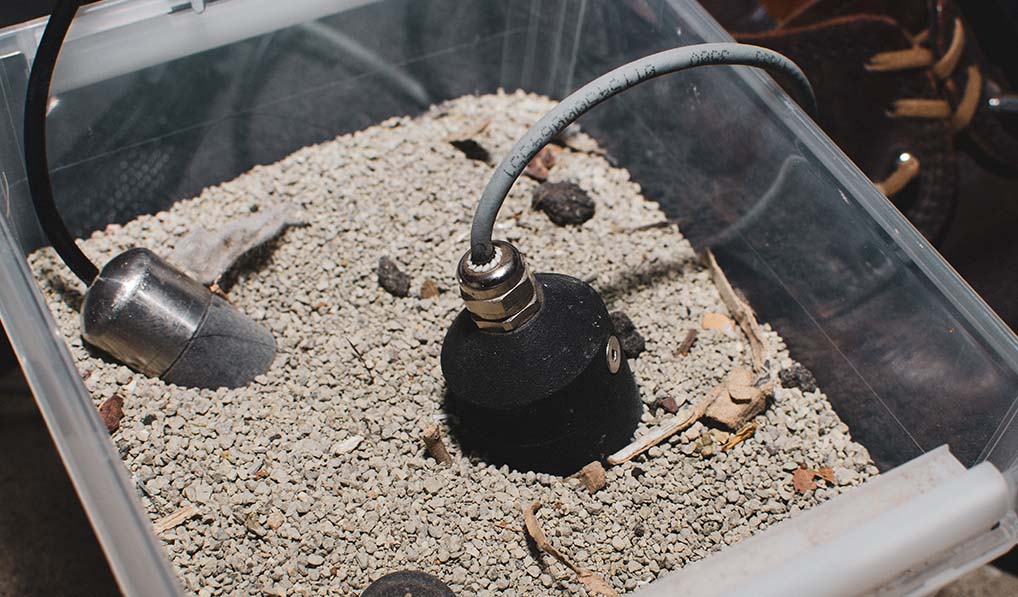
6) Make clear choices in which foley sounds to cover
This one I should tattoo on my butt. Or actually maybe another place more visible…. Because it’s something I need to remind myself to aswel. In the heat of the foley recording moment it can be tempting to put all your great foley ideas into a scene. It’s better though to record only the necessary amount of foley sounds and make clear choices in what would help the scene and tell the story. A big frustration of many re-recording mixers is getting too much foley coverage and having to go through all those sounds to have to mute half of it. So making choices during foley recording is important. Do you really wanna hear someone scratching his cheek when they are in a busy pub? Or have 15 takes of footsteps in that same pub scene when the focus is on a two person conversation? No maybe not.
Realize the foley will be played softer than you hear it during recordings and will later on be competing for a place in the mix together with the dialogue, music and sound effects. So it’s better to spend more time making the sounds that count in the mix extra nice.
Another thing I learned over the years is to pay close attention to what you wanna hear per shot in a scene. Instead of letting every sound layer continue in every shot you better make choices during the foley recording proces and mute certain sounds or record them much lower in volume. That way you follow the focus of the visuals with your sound aswel and automatically create a foley soundtrack that varies instead of being static. For instance when recording footsteps in a scene when someone is suddenly further away in a shot, make him sound further away aswel. For the re-recording mixer it’s so much nicer when you already make those choices already during the recording.
7) Ask for feedback on your foley work
Asking for feedback from a sound designer or re-recording mixer can greatly help in improving your foley too. You might not realize certain things about your foley sound till a client tells you. A few examples of things that clients told me in the past and I fixed are:
- sneaker footsteps with too much transients. Now I make sure my sneakers sound round and make sure I don’t mic to close and use microphones that are less directional.
- focus too much on cloth and skin touches. It can be tempting to cover all this impacts that might occur in a scene but especially in a dialogue scene you only wanna hear those when they really add something to the scene, for instance: friends that meet and hug each other, someone who fiddles with his clothes because he is nervous etc.
- too much noise in the recordings. When a re-recording mixer uses compression on your foley recordings, the noise floor gets pulled up too. So an acceptable noise floor might suddenly be too much and need to be fixed with noise reduction plugins. For very soft sounds like skin touches we started using the Lewitt LCT 540S that has a ridiculously low signal-to-noise-ratio. And we started miking cloth rustle closer too.
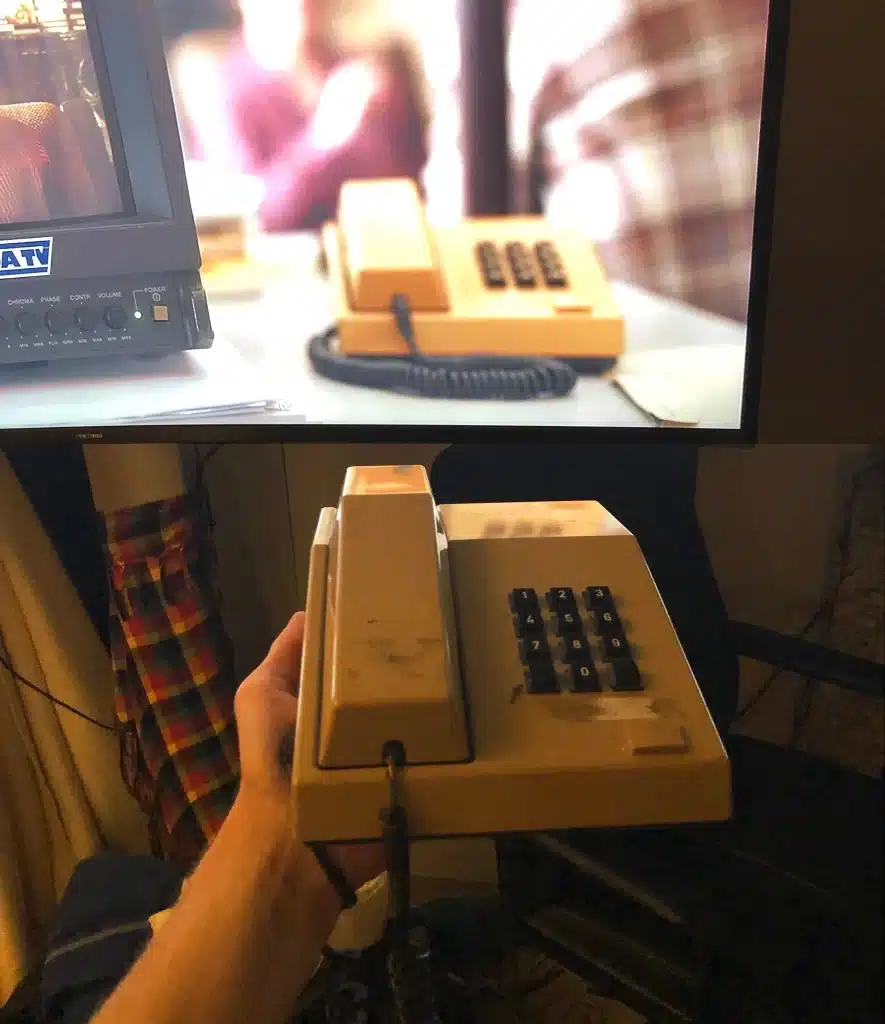
Sometimes you coincidently have exactly the same prop as on set
8) Make your own decision in your foley props and hardware
When I was a starting as a foley artist I could sometimes be blinded by raving reviews or claims for the BEST microphone or BEST hardware you need to have for you foley recordings. First of all: it starts with good performance, technique, shoes and props. And hardware comes second. That being said: if you have that first part nailed a good microphone and preamp are definitely important to get figured out. What I realized was that being true to my own taste and judgement for the foley sound I liked turned out more important than raving claims of a few foley artist. For instance: I tend te record more naturalistic sounding foley because I like that sound better and it sits better in the mix than foley recordings that sounds very close. In that regard I stopped using a widely used microphone like the Neumann KMR 81, cause it sounded too much like ‘foley’ to me and not enough like the real sound. Nowadays my go to microphone is an omnidirectional one because it captures the sound of footsteps and objects in a more beautiful and natural way. Also keep in mind that every foley studio has a different acoustics and every foley artist has a different style so find something that suits your style. And when searching for a preamp for foley recordings be sure to test it with your microphone and a-b-test it with other preamps to really hear the difference in sound between them. I went for a Millennia preamp in the end because I like the warmer sound better than the Grace preamp I tested but found a bit too clean for my taste. But again: that’s my taste, so find your own preference.
In terms of foley props blindly ordering a certain prop at Amazon because you saw it in a video doesn’t always work either (been there, done that). My best props I found on flea markets or thrift shops just by listening. And that’s probably how that foley artist in the video found his magic prop too. Nowadays I have a few addresses for shops I regularly go to. And more often than not the older the props are the better they sound.

Are you Curious to hear all this foley decisions and techniques into action?
Check out our foley showreel at Vimeo and request a password on our contact page.
Related Articles
Approaching foley in a musical way
Learn about the 8 things that greatly improved my foley recordings in the last 15 years. From techniques to gear and mics
Oscar win for I Am Not A Robot!
"And the Oscar goes to: I AM NOT A ROBOT!" The Oscar nomination was already amazing but now Victoria Warmerdams movie won an Oscar in the category Best Live Action Short Film! Congratulations to the amazing cast and crew and

